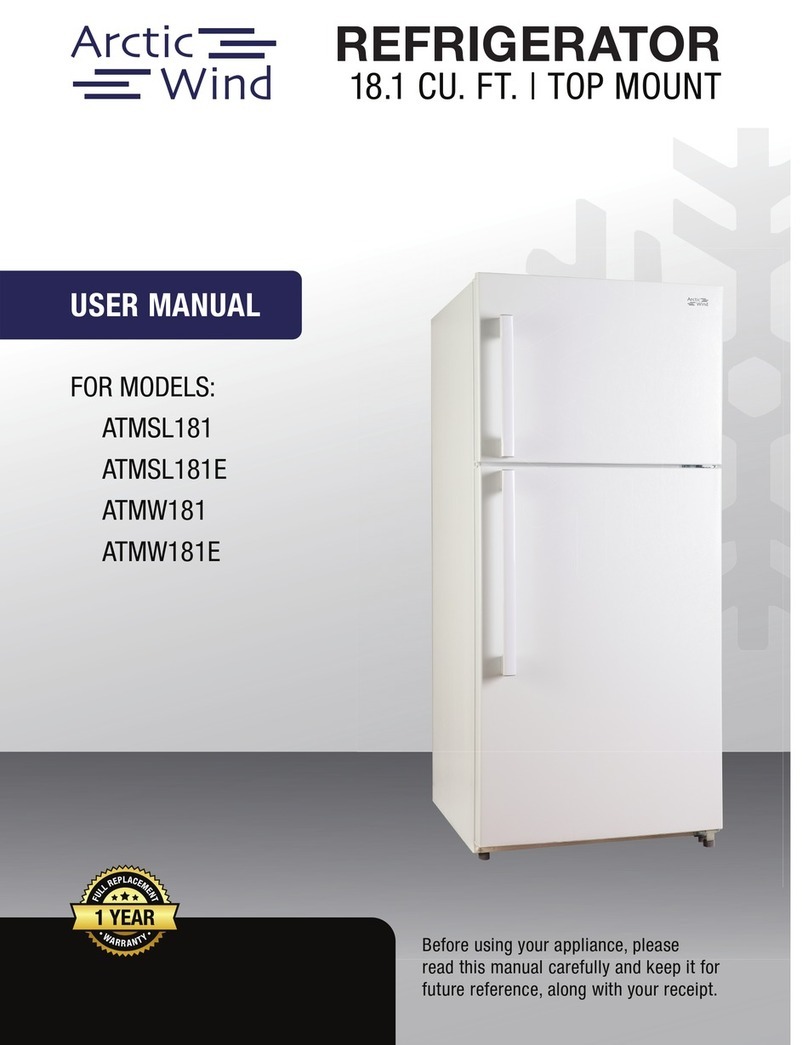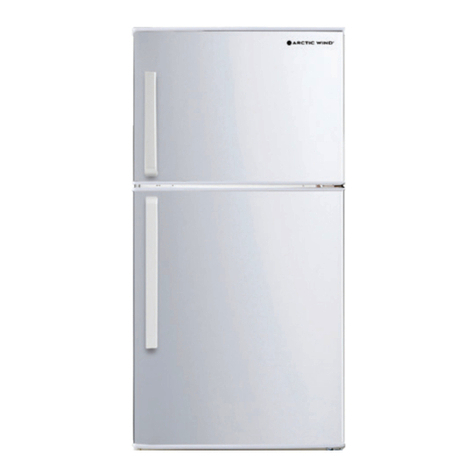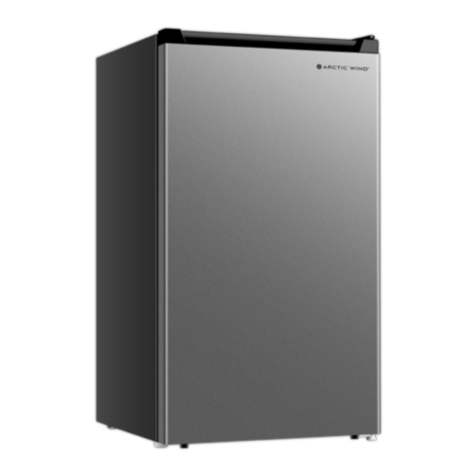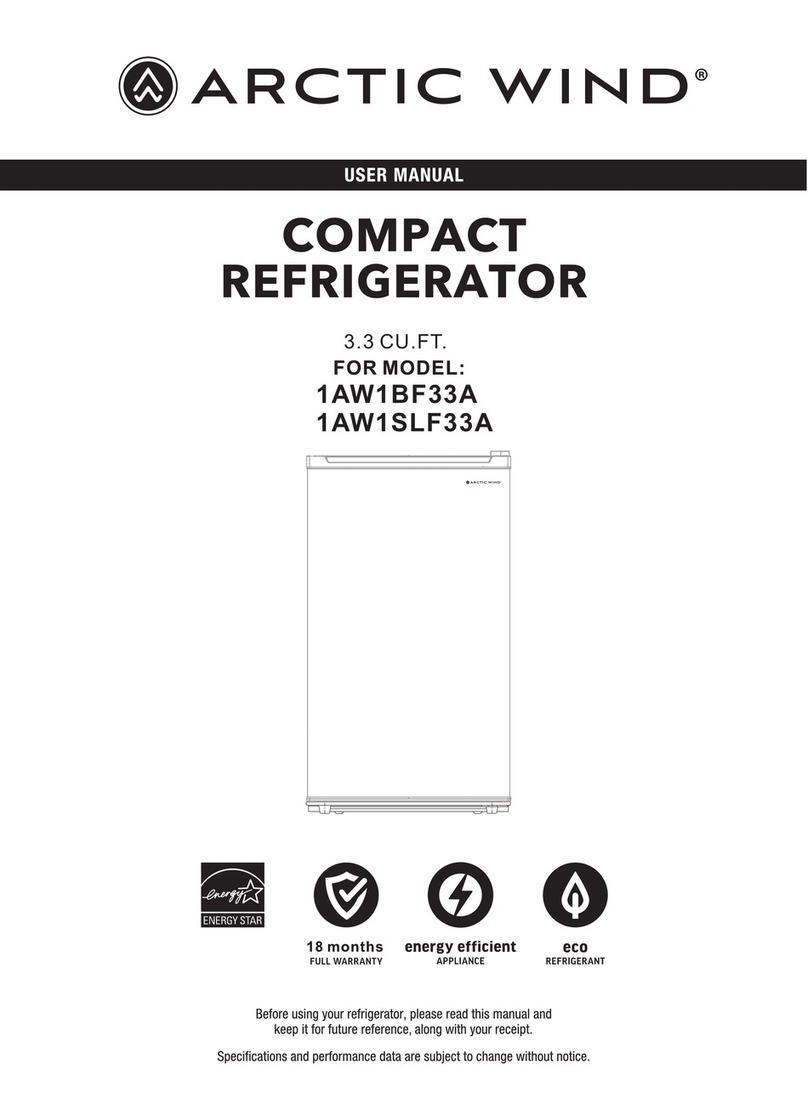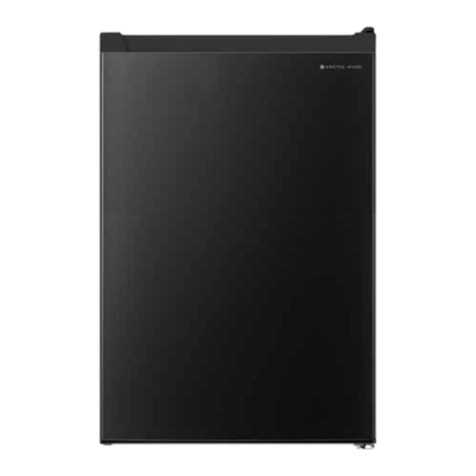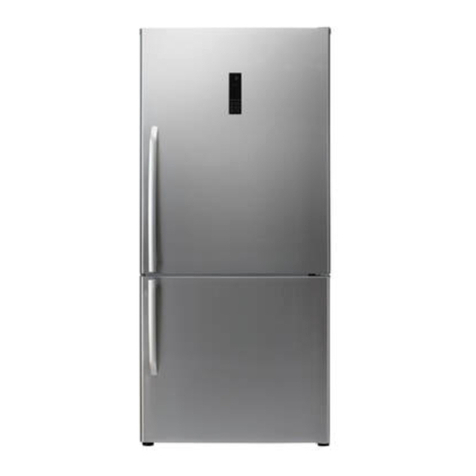
6 7
INSTALLATION
STEP 1: LOCATION
Position the appliance away from sources of heat
such as stoves, radiators, direct sunlight etc.
Maximum performance and safety are guaranteed
by maintaining the correct indoor temperature for
the class of unit concerned, as specied on the
rating plate. This appliance performs well from
55 to 110°F (12.8 - 43.3°C). The appliance may not
work properly if it is left for a longer period at
a temperature above or below the indicated range.
IMPORTANT!
There is a need of good ventilation around the
fridge for easy dissipation of heat, high eciency
of refrigeration and low power consumption. For
this purpose, sucient clear space should be
available around the fridge. It is advisable for there
to be 3 inch (75 mm) separating the back of the
fridge to the wall, at least 4 inch (100 mm) of space
at its two sides, and a minimum of 4 inch (100 mm)
from its top and a clear space up front to allow the
doors to open 135°.
Appliances must not be exposed to rain. Sucient
air must be allowed to circulate in the lower rear
section of appliance, as poor air circulation can
aect performance.
WARNING: Some models may be shipped with a foam pad above the compressor to protect the unit
during transport. Check to see if your unit has one and remove it before use.
Before installing, follow these important rst steps.
WARNING: Keep ventilation openings, in the
appliance enclosure or in the built-in structure,
clear of obstruction.
WARNING: Do not use mechanical devices
or other means to accelerate the defrosting
process, other than those recommended by
the manufacturer.
WARNING: Do not damage the refrigerant
circuit.
WARNING: Do not use electrical appliances
inside the food storage compartments of
the appliance, unless they are of the type
recommended by the manufacturer.
STEP 2: CLEANING
Wash any removable parts of the refrigerator
interior, and exterior with mild detergent and
warm water. Wipe dry. Do not use harsh cleaners
on these surfaces.
Do not use razor blades or other sharp
instruments, which can scratch the appliance
surface when removing adhesive labels. Any glue
left from the tape can be removed with a mixture
of warm water and mild detergent, or touch
the residue with the sticky side of tape already
removed. Do not remove the serial plate.
CAUTION: Flammable refrigerant used! When
handing, moving and use of the refrigerator, make
sure to avoid either damaging the refrigerant
tubing, or increasing the risk of a leak.
LEVELING
The appliance should be level in order to eliminate
vibration. To make the appliance level, it should
be upright and both adjusters should be in stable
contact with the oor. You can also adjust the level
by unscrewing the appropriate level adjustment in
the front (use your ngers or a suitable spanner).
CAUTION: Any electrical work required to
install this appliance should be carried out by
qualied or authorized personnel.
WARNING: This appliance must be grounded.
The manufacturer declines any liability should
these safety measures not be observed.
CLEANING AND CARE
CLEANING
For hygienic reasons the appliance interior,
including interior accessories, should be cleaned
regularly. The fridge should be cleaned and
maintained at least every two months.
WARNING! DANGER OF ELECTRICAL SHOCK!
• The appliance may not be connected to the
outlet during cleaning! Before cleaning switch
the appliance o and remove the plug from the
mains, or switch o the circuit breaker or fuse.
• Remove the food from the appliance before
cleaning. Store food in a cool place and keep
well covered.
• Never clean the appliance with a steam
cleaner. Moisture could accumulate in
electrical components.
• Hot vapors can lead to the damage of
plastic parts.
• The appliance must be dry before it is
placed back into service.
IMPORTANT!
• Ethereal oils and organic solvents can attack
plastic parts, e.g. lemon juice or the juice
from orange peel, butyric acid, and cleansers
that contain acetic acid. Do not allow such
substances to come into contact with
appliance parts.
• Do not use any abrasive cleansers.
• Clean the appliance and the interior
accessories with a cloth and lukewarm
water. Commercially available dish washing
detergents may also be used.
• After cleaning, wipe with fresh water and a
clean dish cloth.
• Accumulation of dust at the condenser
increases energy consumption. For this reason
carefully clean the condenser at the back of
the appliance once a year with a soft brush or a
vacuum cleaner.
• Check the water drain hole on the rear wall of
the refrigerator compartment.
• Clear a blocked drain hole with the aid of
something like a soft peg. Be careful not
to create any damage to the cabinet by
sharp objects.
• After everything is dry, place appliance back
into service.
DEFROSTING YOUR REFRIGERATOR
WHY DEFROSTING
• Water contained in food or getting into air
inside the fridge be opening doors may
form a frost layer inside. It will weaken the
refrigeration when the frost is thick. While it is
more than 10mm thick, you should defrost.
DEFROSTING IN FRESH FOOD STORAGE
COMPARTMENT
• It is manually controlled by switching the
temperature regulator on or o so that there
is no need of operation of defrosting. Water
from defrosting will be drained into an drip tray
below the evaporator.
GO OUT OF USE FOR A LONG TIME
• Remove all refrigerated packages.
• Switch o the appliance by turning the
temperature regulator to position “0”.
• Remove the mains plug or switch o or
disconnect the electricity supply.
• Clean thoroughly (see section: Cleaning).
• Leave the door open to avoid the build up of
odors.
Note: lf the appliance contains freezer
compartment.
